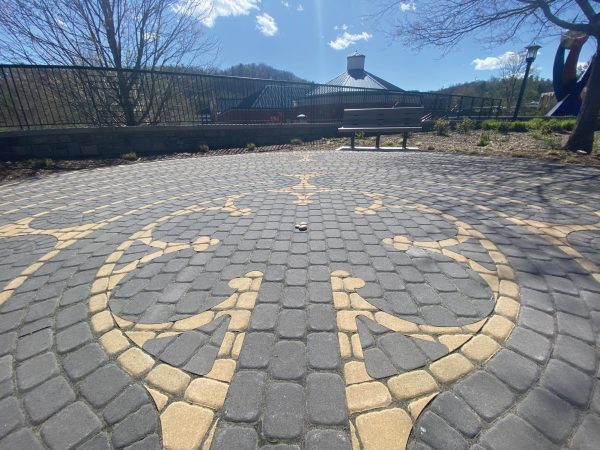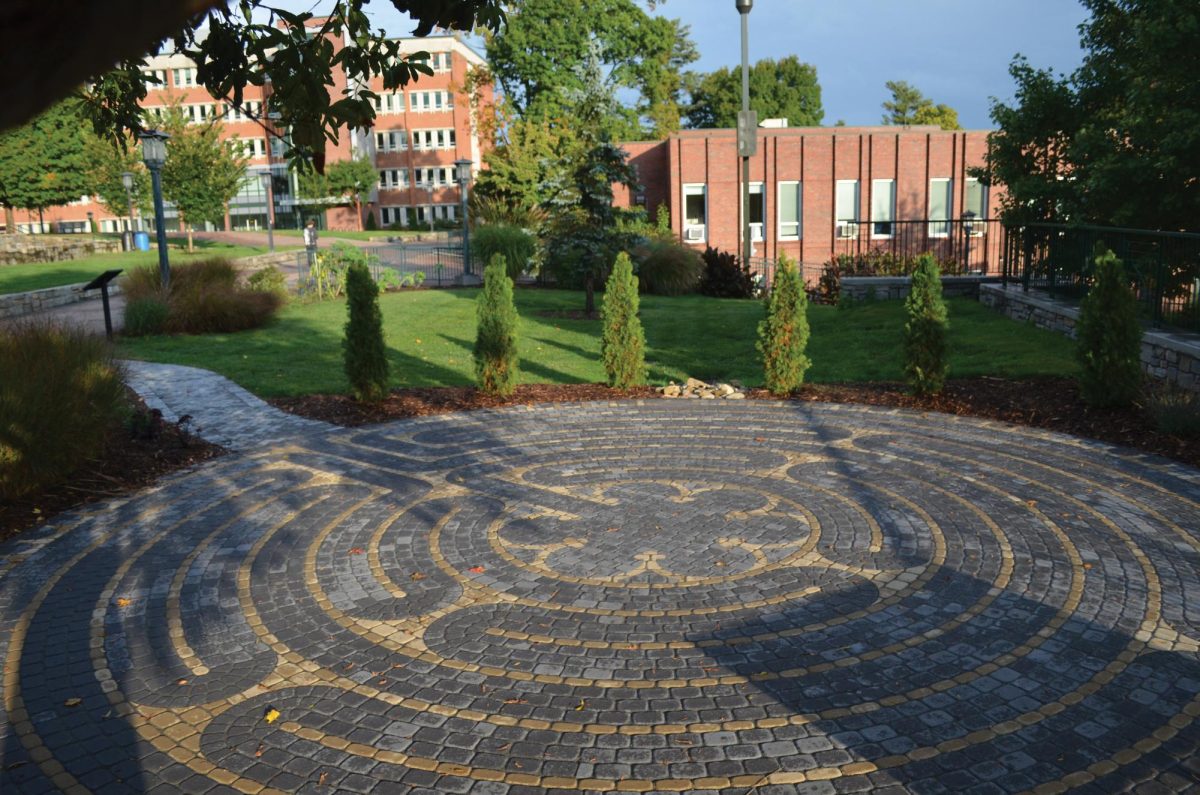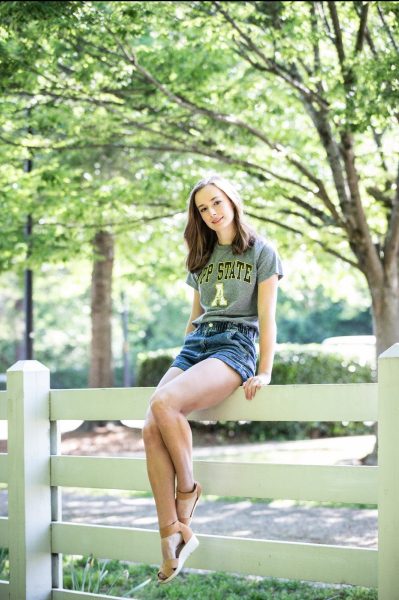Editor’s note: This article contains mentions of death, which some may find upsetting.
Despite having only a single path, the beauty of a labyrinth is one can never truly see where they are going as they walk.
The purpose of a labyrinth is all about the journey, according to The Labyrinth Society. Labyrinths consist of a unicursal, non-branching pathway that winds and curves, reflecting the ebbs and flows of a river. Participants can spend their time meandering along the path, letting it take them along the journey to the center.
In the summer of 2024, App State installed two labyrinths on campus. The first is settled just off of Sanford Mall. Despite being in the heart of campus, the surrounding greenery creates a secluded and peaceful area. The second is located at Leon Levine Hall, tucked away between the bustling work life of Watauga Medical Center and the breathless runners of the Greenway Trail.
Gabriel Yetter, is a junior anthropology and religious studies double major. While at App State, he has walked the labyrinth on Sanford Mall as a meditative practice.
“There’s symbolism behind it that’s like a sort of journey to the center of yourself,” Yetter said. “It’s very calming and centering.”
Heather Thorp, the practicum director of the Department of Social Work, and Denise Levy, a professor in the same department, were two of the leading figures alongside other faculty and staff behind the initiative.
According to Thorp, the process began with a painted, walkable canvas labyrinth in 2014. After there were multiple deaths on campus, the pair felt it would be important to find a place for students to grieve together. As part of the Expressive Arts and Social Justice Learning Community, they purchased a foldable canvas labyrinth and housed it beside Cascades Cafe in Plemmons Student Union. Thorp still has this labyrinth and has become the official caretaker for it.
“Even before that, there had been people who were trying to get the labyrinth on campus,” Thorp said. “So this has been going on for, you know, more than 15 years.”
Jordan Perry, the director of Wellness and Prevention Services, received a grant from the North Carolina Department of Health and Human Services to fund the labyrinth on Sanford Mall in 2024.This grant focused on the students, staff and faculty who are currently in or seeking recovery at App State.

Not long after the Beaver College of Health Sciences got funding for the labyrinth at Leon Levine Hall.
Both labyrinths are a part of the Outdoor Wellness Locations Initiative. According to the Beaver College of Health Sciences, the initiative emphasizes the importance of mental wellbeing, community and a connection with nature on college campuses.
Levy has been walking labyrinths for over 10 years.
“We live in a fast-paced society, and we have so many things that are competing for our attention,” Levy said. “What I like about the labyrinth is that it almost forces you to slow down, to focus your attention to be in the present moment. It is so important to have those moments of slowing down and being present with yourself, with your body and with other people.”
Wellness and Prevention Services often utilize the labyrinth in their practices. Through facilitated group walks, they provide help for those seeking guidance. All facilitators are trained on labyrinth history and etiquette to give the best possible experience. Before beginning, they instruct walkers to think of a certain prompt to guide them.
“There’s something that’s called releasing, receiving and returning,” Levy said. “You are releasing as you walk in, you are open to receive what you need when you’re in the center, and then as you walk out, you are returning and taking that with you.”
Thorp began walking labyrinths in the late 1990s. In the nearly 30 years since, she has walked over 100 across the United States.
“There are a lot of metaphors involved in the labyrinth,” Thorp said. “Sometimes halfway through you’re like, ‘Am I lost? I feel like I should be in the center and I’m further away than I was when I started.’”
It’s easy to feel lost amongst the chaos of everyday life. Whether it be overwhelming coursework, impending finals seasons or a badgering roommate, the meditative circles of a labyrinth can aid in soothing the chaos for everyone.
“We try to talk with people about how that’s a metaphor for life,” Thorp said. “Sometimes we feel lost, but we just keep going one foot in front of the other and keep trusting the process that we will get there.”
Audi Holloway, a senior biology major, has been walking labyrinths since her fifth grade class took a field trip to Colonial Williamsburg. Walking through the garden hedges of the Governor’s Palace’s maze, she said she felt completely grounded.
“I like how mindless they are. I prefer a labyrinth to a true maze,” Holloway said. “I don’t want to have to think and plan and figure out where I’m going.”
As she gets ready for graduate school in the fall, the Sanford Mall labyrinth has become a place of peace.
“If I’m planning for grad school or I’m working on a project, that’s when I’m doing it,” Holloway said. “Walking really grounds me. It really relaxes me and just having that path really helps me to focus.”
Labyrinths can provide a safe space for all those who need them. Interested participants are able to sign up to attend a guided labyrinth walk or use the two labyrinths independently. The labyrinths are open to both the university as well as the community of Boone.


